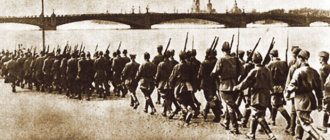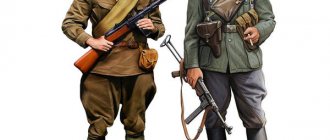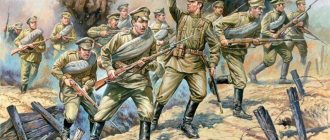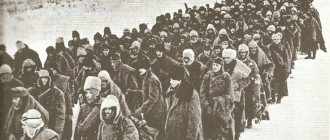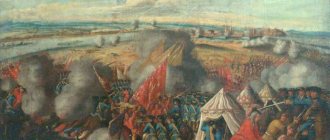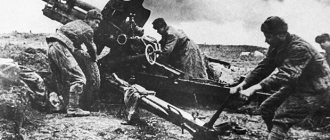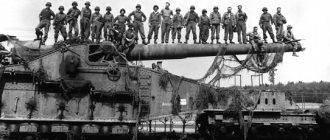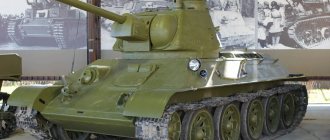The second defense of Sevastopol in 1941-1942 became one of the most important events of the Great Patriotic War that entered the history of Russia. The most difficult trials fell on the shoulders of the defenders of the Crimean port, who became models of courage and heroism. Thanks to their unbending will and fortitude, the fascist army was stopped on the approaches to the city, suffered huge losses and slowed down the rapid advance.
Background and position of the parties
In September 1939, Hitler's troops began their “invincible march” on European states. Country after country, with little resistance, gave up their keys to their cities. The enemy's disciplined and well-equipped army swept away everything in its path. By the summer of 1941, the Nazis pulled troops to the Soviet borders. On the first day of the start of the war, June 22, Sevastopol was subjected to enemy bombing. Trying to block the Black Sea Fleet in the Sevastopol Bay, enemy aircraft dropped magnetic mines into the sea. The bombing of Sevastopol was carried out daily, destroying the city and killing the civilian population.
The Soviet fleet and aviation were already ready to repel the attack. Air defense guns successfully repulsed raids by enemy aircraft, warships attacked the Romanian city of Constanta, which supplied the enemy army with fuel, with gun salvos. The active resistance of the Soviet army and navy pushed back the enemy troops for some time and gave the German command cause for thought.
Photo source: wwii.space/photo-USSR-Sevastopol-during-the-war/
After the events in Crimea, Hitler decided to change his plans somewhat. And he had grandiose plans - having captured European states, he planned to quickly attack the USSR, in a short time to conquer the country on its own territory and gain world domination. Confident of his superiority, he approved the famous “Operation Barbarossa,” the execution of which assumed a quick and unconditional victory. But already at the very beginning of the attack, adjustments had to be made. Part of his army was sent south, to the Crimean Peninsula.
The Black Sea port of Sevastopol was a tasty morsel for Hitler. After its capture, the sea opened up for him with access to Turkey and the Caucasian oil regions. In addition, the USSR was deprived of the military base of the Black Sea Fleet, aviation and the ability to bomb Romanian oil fields. Therefore, the conquest of the southern peninsula became one of the most important tasks for Hitler:
“In Adolf Hitler’s order dated August 21, 1941, it was said: “The most important goal before the onset of winter is not the capture of Moscow, but the capture of Crimea...”
Apparently, the Fuhrer did not know the history of Russia (or he knew, but did not give it the necessary importance) - in the recent past, Sevastopol survived the first defense with dignity, its participants became a model of military valor for subsequent generations, and this did not bode well for the enemy.
The Belokamenny port was well prepared for combat operations by aviation and navy. But the land was not protected. To achieve this, the city leadership, together with soldiers, sailors and residents of Sevastopol, in July 1941, began to build defensive structures in three directions, which can be seen on the map of the defense of Sevastopol 1941-1942:
- Rear - it was located 3 km from the city, the fortifications were located along a length of 19 km
- Main - 35 km long, 4 sectors of defensive structures were laid
- Advanced - planned from Balaklava to Kerch, but was not completed due to the first assault
To prepare for the defense of Sevastopol in 1941-1942, city residents worked tirelessly. Together with soldiers and sailors, they built dugouts and bunkers, and worked in factories making guns. Hospitals, warehouses, and strategically important enterprises were lowered into the dungeons that had existed in Sevastopol since the 19th century. An entire city lived, worked and fought underground, helping the Soviet army guard the Crimean port. Later, some of the residents were evacuated, and those remaining in Sevastopol gathered into the people's militia.
One of the workshops produced by the Sevastopol underground military special plant No. 1. Source: waralbum.ru/23627/
The beginning of the defense of Sevastopol during the Great Patriotic War
In the early autumn of 1941, German troops, in alliance with Romania, confidently advanced on the Soviet Union. Smolensk and Kyiv had already been captured by the Nazis, and the blockade of Leningrad began. Almost the entire territory of Ukraine was occupied by the enemy. In the middle of the month, Hitler’s army began to approach Crimea. It was possible to capture the peninsula from the land side only through the Perekop Isthmus. Defense from the enemy was carried out by troops of the 51st Army under the command of Colonel General F.I. Kuznetsov. Several rifle divisions and cavalry units were dispersed around Perekop, guarding the coast and preventing enemy landings.
Soviet soldiers fought heroically for 5 days, defending the peninsula. But in mid-October, Hitler’s army under the command of Colonel General Erich Manstein finally broke through to the Crimea through the village of Ishun. Their numbers were several times greater than the army of the defenders of the peninsula:
- 200 thousand soldiers
- 600 aircraft
- 400 tanks
- 2000 guns
As a result, the Soviet army was forced to retreat, and the enemy troops, having received new reinforcements, continued their victorious march. The main goal of the seven German divisions and Romanian detachments was to capture the Crimean Peninsula as quickly as possible. The army commanders, seeing the fierce pressure of the enemy and the difficult situation on the Southern Front, decided to leave Odessa, evacuate the population, and send the Primorsky Army to the defense of Crimea.
Part of the army took part in the battle of Perekop, but after the breakthrough of enemy troops they retreated to Kerch, and then most of the army was sent to Kuban. The remaining troops retreated in small numbers through the Crimean mountains and along the seashore to Sevastopol. German troops pursued both parts of the Soviet army, and two separate enemy divisions went directly to capture the city.
On October 29, a state of siege was declared in the city and this day became the beginning of the heroic second defense of Sevastopol 1941-1942 during the Great Patriotic War. At that time, the garrison numbered only 21 thousand people and 150 mortars and guns. The impregnable port fortress became the only city not captured by the Nazis, and the general of the enemy army concentrated all his forces to deliver a decisive blow. Everyone who took up arms came to the defense of Sevastopol - marine detachments, cadets of naval schools, militias and city residents. With the arrival of individual units of the Primorsky Army, the number of troops increased to 50 thousand people, 100 aircraft and 170 guns. But still this was too little in comparison with the army of the Germans and Romanians.
The defense of Sevastopol in the Great Patriotic War began, first of all, with the unification of troops on land and the Black Sea Fleet into the Sevastopol Defense Region (SOR), commanded by Vice Admiral F.S. Oktyabrsky. His deputies were: on land - the commander of the Primorsky Army, General I.V. Petrov, the defense of the coast was led by Major General P.A. Morgunov, and leadership of the air forces was assumed by Major General of Aviation N.A. Ostryakov. The main governing force was the Military Council of the Black Sea Fleet.
Joint meeting of the Military Councils of the Black Sea Fleet and the Primorsky Army. Sevastopol. 1941 – 1942 Source: sevarchiv.ru/vystavka-arkhivnykh-dokumentov-ehtot-den-my-priblizhali-kak-mogli/
On November 11, 1941, the first assault on Sevastopol began, and German divisions attacked the approaches to the city with heavy fire. Expecting to capture Sevastopol without much effort, the enemy troops did not stop shelling for a minute. The fiercest fighting took place in the area of Balaklava and the village of Duvankoy. Enemy artillery and air bombing turned part of the city and the bay into ruins, and ships were sunk right at the piers.
Reflection of the first assault on Sevastopol on November 11-21, 1941.
Photo source: konturmap.ru/oborona-sevastopol.html A few marine detachments, supported by battery fire from the coastal defense, heroically repelled enemy attacks. After the Primorsky Army joined, the fighting dragged on for 10 days, causing huge losses to the enemy and allowing them to advance only a few kilometers towards the city. By November 21, the exhausted German troops, from the unexpectedly brutal rebuff of the Soviet army, moved on to besieging the city, which was blocked from the land side. Thus ended the first assault on the defense of Sevastopol during the Great Patriotic War.
The first German offensive on Sevastopol
The first German offensive on the city began on November 11. The enemy's main attack was aimed at Balaklava. The offensive involved 4 infantry divisions, a motorized detachment and a Romanian motorized brigade. An additional attack was carried out along the Kara-Kobya valley. During fierce battles, the Germans were able, at the cost of heavy losses, to wedge themselves into the forward defensive line in some areas. After this, the enemy was forced to resume the siege on November 21.
Wehrmacht soldiers in a captured pillbox near Sevastopol
By decision of the command of the Black Sea Fleet, warships were relocated to the ports of the Caucasus in early November 1941. But ships periodically entered the bay of Sevastopol, providing the defenders with reinforcements, ammunition, medicine and food.
Second assault on Sevastopol
The short break between assaults was used by the command of the Soviet army to strengthen the defense. The SOR troops and the Primorsky Army were replenished with several divisions, marine brigades and separate rifle regiments. The guns were removed from the ships of the Black Sea Fleet and additional stationary batteries were erected. New pillboxes and bunkers were built, more than 500 anti-tank mines were placed, civilians and the wounded were evacuated.
The command of the German army also did not waste time. By the beginning of the second assault, their military arsenal had been replenished with new weapons and people, combining in total:
- Seven infantry divisions and two mountain brigades
- 1.3 thousand mortars and guns
- More than 150 tanks and 300 aircraft
- Heavy artillery batteries with 360 mm caliber guns
- Siege howitzers and 800 mm Dora class gun
The second assault on Sevastopol was planned by the Nazis for November 27, but unpredictability of weather conditions delayed the enemy’s advance, and only on December 17 did the attack on the city begin with powerful salvo attacks. Fierce fighting took place in the areas of Inkerman and Makenzieva Mountain; the enemy was making its way to the Northern Bay, trying to capture Sevastopol through it. Soviet troops repulsed attacks in all directions, heroically fighting an enemy army superior in technology and number of people.
Reflection of the second assault on Sevastopol on December 17-31, 1941. Photo source: konturmap.ru/oborona-sevastopol2.html
Powerful artillery support more than once rescued the city’s defenders, but still they were forced to slowly retreat. Tired and exhausted soldiers from the continuous attacks of the fascist army and lack of ammunition went deeper, leaving their positions. Having learned about the sad events near Sevastopol, the Soviet command ordered urgent assistance to the city.
On December 21, despite continuous artillery attacks and bombing by enemy aircraft, ships of the Black Sea Fleet broke through to Sevastopol. This was truly a heroic feat of sailors sacrificing their lives to save the Crimean port. The marines, who arrived on ships, under the cover of salvo guns, rushed into battle with the enemy in the most difficult sectors of the battle. Thanks to the dedication of the fighters, the enemy only moved slightly to the north, the situation stabilized, and the front line remained almost unchanged.
The battleship Paris Commune supports the infantry with fire. December 1941 Source: wwii.space/photo-USSR-Sevastopol-during-the-war/
A huge role in repelling the second assault was played by the Soviet landing in the areas of Kerch, Feodosia and Yevpatoria at the end of December and beginning of January. The German command was forced to transfer army detachments from near Sevastopol to the Kerch Peninsula. The territory of Kerch was liberated from the invaders and the Crimean Front was urgently created there under the command of General D.T. Kozlov. The Marine landing battalion, landed on January 5 in Yevpatoria, together with partisans and underground fighters, destroyed the Romanian garrison and drove the Nazis out of the city, but almost all died fighting with the reinforcements of German troops that arrived.
For the enemy army, the second assault on Sevastopol ended in complete failure. On December 31, General E. Manstein gave the order to suspend attacks on Sevastopol and temporarily stop hostilities. More than 40 thousand enemy soldiers and officers were killed in fierce battles with Soviet soldiers and sailors.
Capture of the Kerch Peninsula
On October 29, mobile units of the Wehrmacht broke through to the steppe expanses of the Crimea, where there were no natural boundaries to stop them up to the mountainous strip of the southern coast. Under enemy pressure, the Primorsky Army received orders to retreat to Sevastopol, and the 51st Separate Army to Kerch. Retreating with heavy fighting to the Kerch Peninsula, the 51st Army tried to detain the enemy, first at the Ak-Monai positions, and then at Kerch at the turn of the Turkish Wall. Unable to delay the rapid advance of the Germans, the 51st Army, by order of the Supreme High Command, abandoned the Kerch Peninsula. On the night of November 16, under the cover of the Azov flotilla, she was transported to the Taman Peninsula.
Continuation of the siege of Sevastopol
The beginning of January 1942 was relatively calm for the Sevastopol defenders. The victory of the landing force on the Kerch Peninsula inspired the Soviet army, and new reinforcements began to arrive in Sevastopol. Receipts continued regularly until May. The German army, on the contrary, was reduced due to the sending of most of the soldiers to the east of the peninsula to suppress the landing in Kerch. The beginning of the year was marked by several small skirmishes with the enemy, which did not make any changes in the war. This time of defense of Sevastopol during the Great Patriotic War was called a period of calm.
The ships of the Black Sea Fleet supported the army and residents with all their might, breaking into the besieged city. They delivered reinforcements, guns, food, medicine to Sevastopol, and took out the wounded, children and the elderly. If necessary, they “watered” fire on enemy positions, causing panic among the Nazis. And when the ships were no longer able to break through the enemy siege, their place was taken by submarines, whose crews selflessly helped the Sevastopol defenders at the cost of their lives.
Defenders of the city at the monument to Kornilov.
1942 Source: wwii.space/photo-USSR-Sevastopol-during-the-war/ In May 1942, the most unsuccessful battles of the Second World War took place - Kerch and Kharkov. With a predominant army over the enemy, Soviet troops lost the battle for Kerch and retreated, giving its territory to the Nazis for occupation. Called a “disaster,” the battle was fought due to poor command, disastrous inaction, and dissension among commanders.
Third German offensive on Sevastopol
At the end of May 1942, Soviet troops were forced to leave the Kerch Peninsula. Some units of the 51st Army were evacuated to the mainland. After the liquidation of the Crimean Front, the defense of Sevastopol could not last long.
Almost the entire 11th German Army, numbering over 200 thousand people, was concentrated near Sevastopol. The enemy had 2 thousand guns, 450 tanks, 600 aircraft. The Soviet troops, which received reinforcements in early June, had 106 thousand people, 600 guns, 38 tanks and 53 aircraft. The city was completely blocked from land.
During the same period, the enemy took active measures against the Black Sea Fleet. For this purpose, the enemy used torpedo boats, patrol boats and submarines, which were based in Yevpatoria and Yalta. Aviation played a significant role. According to the plan of the German headquarters, the naval blockade was supposed to weaken the defenders and facilitate the capture of the city. Without the supply of reinforcements and ammunition, Sevastopol could not resist for long, despite the experience of the command and the heroism of ordinary soldiers and sailors. The number of shells that were nevertheless able to be delivered to the besieged city did not cover the costs. As a result, Soviet artillerymen had to reduce the density of fire. Anti-aircraft artillery could not shoot down enemy planes, which is why the Germans intensified their bombing of the city.
The destroyer "Tashkent" goes to Sevastopol
The cruiser "Red Caucasus" on the approach to Sevastopol
Since May 27, Sevastopol was subjected to artillery shelling and air bombing almost daily. On June 7, after lengthy artillery preparation, the German army went on the offensive. The main blow fell on the eastern shore of Sevastopol Bay, with a secondary blow on the southeastern outskirts of the city. For 5 days there were stubborn battles, as a result of which the Soviet troops had to retreat. On June 18, the enemy reached Inkerman and Sapun Mountain.
On June 22-26, the defenders received their last reinforcement - the 142nd Infantry Brigade. During this period, the naval blockade intensified: several ships of the Black Sea Fleet were sunk by enemy aircraft. The leader "Tashkent" became the last of the surface ships to break into the city. To deliver ammunition and remove the wounded, transport aircraft began to be used, making flights from Krasnodar at night.
On June 29, German troops resumed the assault. The enemy advanced along almost the entire front line, except for Balaklava. The Germans behaved extremely self-confidently, which is why they suffered heavy losses. Later they became more cautious and moved only after preliminary artillery preparation.
But the position of the Soviet troops was also extremely difficult. There was a real threat of the enemy capturing Sevastopol. As a result of airstrikes and artillery shelling, individual units were completely destroyed. The defenders were left with only 18 thousand soldiers, 200 field artillery guns and 20 air defense guns. By the evening of June 29, German units were firmly entrenched in the Sapun Mountain area.
On the night of June 29-30, the Soviet command regrouped its troops. On the same night, Black Sea Fleet aircraft attacked enemy ships in the port of Yalta. Aircraft from the Sevastopol defensive region also took off and bombed enemy positions. During the day, aircraft could not be used due to the fact that German fighters blocked the airfield.
On June 30, the enemy continued the offensive. The multiple advantage in military equipment and manpower allowed German troops to penetrate the defense line in several places. Many Soviet units were surrounded and destroyed. By the evening of June 30, the German army captured all the main approaches to Sevastopol. The defenders were forced to retreat to Chersonesos and the Cossack and Kamyshovaya bays.
On July 1, the Germans controlled almost the entire coast in the Sevastopol area. Soviet soldiers, knowing that evacuation was impossible, stubbornly resisted. They destroyed all strategically important objects, plant equipment, warehouses, and food supplies.
Spacecraft soldiers on vacation, Sevastopol 1942
The second defense of Sevastopol continued until July 4, 1941. The defenders had only small arms and a small amount of small-caliber artillery. Most of the fighters died or were captured. A small part of the defenders was taken out by planes, submarines and small vessels. Some groups managed to break through to the partisans.
For the capture of the city, the commander of the German army, Colonel General von Manstein, received the rank of field marshal.
Third assault on Sevastopol
After the defeat of the Soviet army in the east of Crimea, the situation in Sevastopol became sharply more complicated. Fascist troops strengthened the blockade by land and sea, focusing all their attention on capturing the city. They gathered all the main forces for the decisive third assault. Of them:
- 10 infantry divisions (three Romanian)
- Three regiments and a motorized brigade
- 450 tanks
- 1325 guns
- 720 mortars
- 1060 aircraft
In total, the enemy army numbered more than 200 thousand people, of which the combat strength was 175 thousand people. The Soviet army was much more “modest”:
- 7 rifle divisions, 50% staffed
- 4 brigades and 3 marine regiments
- 38 tanks
- 606 guns
- 918 mortars
- 116 aircraft
The total number of defenders of Sevastopol was 106 thousand people, of which 82 thousand were combat personnel. Outnumbered by almost two to one, the enemy army resolutely prepared for a fierce battle. Every day of this period became historically important for both sides and the heroic defense of Sevastopol 1941-1942 took on the highest momentum:
- May 21 - the beginning of artillery and air bombardment of the city, all positions and rear areas
- June 2 - powerful, continuous bombardment of Sevastopol from all guns lasting 5 days. German divisions advanced from land, several units of the Romanian army attacked Soviet soldiers from the east
- June 7 - enemy offensive along the entire perimeter with the goal of capturing the Northern Bay, Sapun Mountain and Balaklava. This day is considered the third assault on Sevastopol and the largest battle on the Southern Front against the fascist invaders. The fierce struggle lasted more than a week, enemy aircraft dropped more than 4.5 thousand bombs daily, sweeping away the remains of the city from the ground. The defenders of the White Stone fought with incredible efforts and amazing courage during the second defense of Sevastopol.
- June 17 - the Nazis broke through the 2nd defense of Sevastopol 1941-1942 in the north of the city, they pulled close to the southern side. The approaching reinforcements of the Soviet troops were no longer able to stop the powerful pressure of the enemy
- June 26 - at night the last surface ship "Tashkent" was able to break through to Sevastopol, delivering marine soldiers, fuel and ammunition
- June 29 and 30 - enemy aircraft dropped more than 15 thousand bombs on the city, 8,000 shells and 14,000 mines were fired by artillery. The Sevastopol defenders no longer had any strength or ammunition left. Fierce battles broke out in different directions of Sevastopol, the remnants of the SOR troops repelled attacks on Malakhov Kurgan, Istorichesky Boulevard, Laboratory Highway and other areas. At night, the soldiers left without ammunition went to the bays and to Cape Chersonesos. In these places the fighting continued until July 12. On the night of July 1, the Supreme Command Headquarters gave the order to evacuate the command staff of the army and navy
- July 1 - The Crimean port was completely occupied by the Nazis, some of the Soviet troops left through the bays, those who remained, without waiting for evacuation, were captured or shot. The defense of Sevastopol in the Second World War has reached its final stage.
Third assault on Sevastopol June 2 – July 4, 1942 Source: bellabs.ru/30-35/Maps.html
The meaning of defense
S. o. became an important stage of the 1st period of Vel. Otech. war, participants of the S. o. For 8 months they pinned down large enemy forces, preventing him from launching an offensive in the Caucasus.
By decree of the Presidium of the USSR Armed Forces of December 22, 1942, the medal “For the Defense of Sevastopol” was established; it was awarded to St. 52.5 thousand people (as of 1995); OK. 50 people awarded the title of Hero of the Soviet Union. Union. S. o. dedicated to the painting by A. A. Deineka (1942). In memory of S. o. a memorial with the Eternal Flame was created in the city (1964–67, 1999, architect E. I. Fialko and others, sculptor V. V. Yakovlev), a museum historical and memorial complex of heroic. defenders of Sevastopol “35th coastal battery” (2008–12, architect A.I. Khomyakov).
Evacuation of command personnel
On June 30, 1942, the Ship side of Sevastopol was completely captured and the battle on Malakhov Kurgan was lost. The Crimean Front ended its short existence and “the most persistent fortress of Russia” was given to the Nazis. On June 29, Admiral Oktyabrsky ordered the command post to be moved to 35 BB. By morning, all the remaining troops reached the area of the Chersonesus Peninsula, exhausted, wounded and without ammunition.
Oktyabrsky did not plan to continue the defense in order to save the remnants of the army and gradually evacuate them. He sent a telegram to Budyonny with a request to take commanders and senior officials out of the dangerous territory to the Caucasus. He did not forget about his own person, transferring his powers to General Petrov. By evening, he received a response from the Commander-in-Chief of the Navy Kuznetsov with permission to evacuate.
After a hastily held meeting, it was announced that General Petrov was also leaving Sevastopol, and General P.G. Novikov would take over the leadership of the army. This decision was incomprehensible - the soldiers believed Petrov, followed him, and he left them at the most difficult moment. Subsequent orders were no less monstrous - the entire leadership of the army and navy had to leave their troops and prepare for evacuation.
Assault on the 35th battery. July 1942 Source: wwii.space/photo-USSR-Sevastopol-during-the-war/2/
It is difficult to describe how the defenders of Sevastopol felt at that time. Betrayal, pain of loss, fear and complete lack of understanding of what is happening around. About 80 thousand people were left to their fate, abandoned, although they were ready to “fight and fight.” Their last task was to cover the evacuation of the command and successfully join the partisan detachments.
The commanders of the Soviet army fled at night, under the cover of darkness. Through an underground passage, accompanied by security, they went out to the airfield to a waiting plane. Vice Admiral Oktyabrsky, according to an eyewitness, was dressed in inconspicuous cast-offs, and had a cap pulled down over his eyes. After takeoff, machine gun fire from indignant soldiers was heard in his wake. That night, planes took out 232 management personnel.
General Petrov departed no less impressively. At night, together with the senior command staff and the headquarters of the Primorsky Army, they went through an underground passage to pier 35 BB and, under the protection of guards with weapons, were transported to submarines, which, without slowing down, went to sea. Thousands of pairs of eyes of soldiers and city residents gathered at the pier looked after them with disappointment.
General Novikov, who remained in charge of the doomed army, was wounded in battle and sent to sea for evacuation. But off the coast of Yalta, his boat was attacked by the Nazis and destroyed. The wounded general survived and was captured and taken to a German concentration camp, where Pyotr Georgievich, at the age of 36, passed away in 1944 without seeing the liberation of Sevastopol.
General Novikov defense of Sevastopol 1942. Source: www.business-gazeta.ru/article/466344
“Sevastopol is called the “city of Russian glory.” In fact, it would be more honest (without taking away glory from the hundreds of thousands of unknown fallen, but on the contrary, giving honor to the abandoned and forgotten) to call Sevastopol the city of “devoted heroes.” Moreover, after death, many streets of the city are named after the traitors, who were crowned with orders, stars and epaulettes during their lifetime.” Andrey Klimenko.
The last pockets of resistance
The remnants of a disorganized army of many thousands made their way to the Chersonesos Peninsula, hoping for evacuation. Everyone who could still hold a weapon in their hands and, if they had one, continued to heroically fight the enemy. In different parts in the area of the 35th coastal battery, among the rocks and cliffs, weak cannonades of battle were heard, which continued until June 12. Several detachments managed to break through into the forested mountain peaks and take refuge with the partisans.
General Novikov tried to resume the defense from the remaining fighters, and even took up arms himself, but his attempts were ineffective. There was no communication between the units, the army was uncontrollable, there was complete chaos around, people were trying to hide from enemy shells and air raids. For a while he managed to organize an attack on the Nazis, but it was more of a psychological attack that scared the German soldiers than a battle in the war. One of its participants said:
“...the crowd of attackers, beyond the reach of the eye, grey, burnt out, almost entirely white with bandages, the roaring mass produced such a terrible impression that the German companies, which had been pretty exhausted during the day, took to flight.”
Thousands of people, trying to hide, were shot by the Nazis, captured, and killed by Tatar self-defense units. Wounded and exhausted, they died from wounds and hopelessness, hunger and thirst. They were brutally killed in concentration camps, burned on barges on the open sea, and drowned in water. Of the approximately 80 thousand defenders of the city left on the banks of Sevastopol, only 1,726 people were evacuated. Among them were the wounded and mainly management and party workers.


